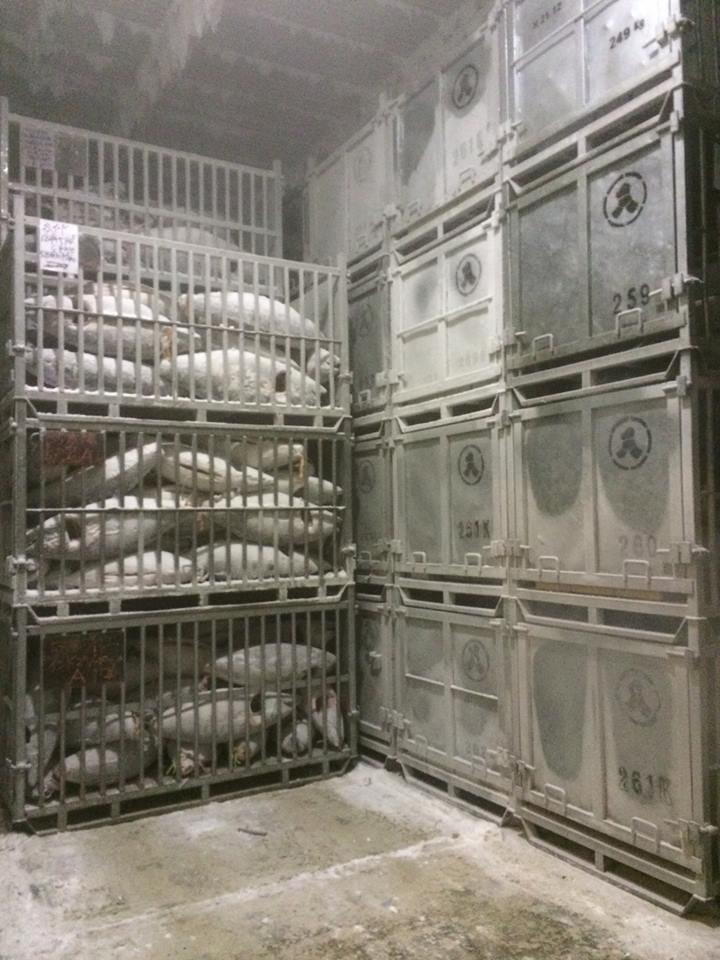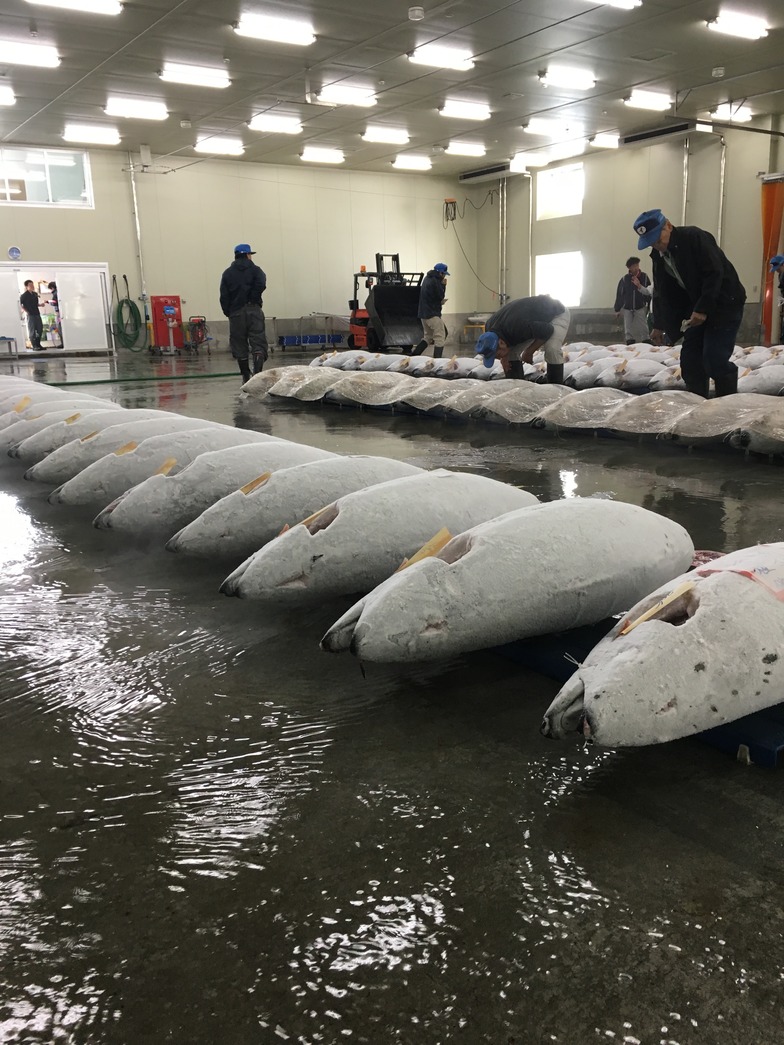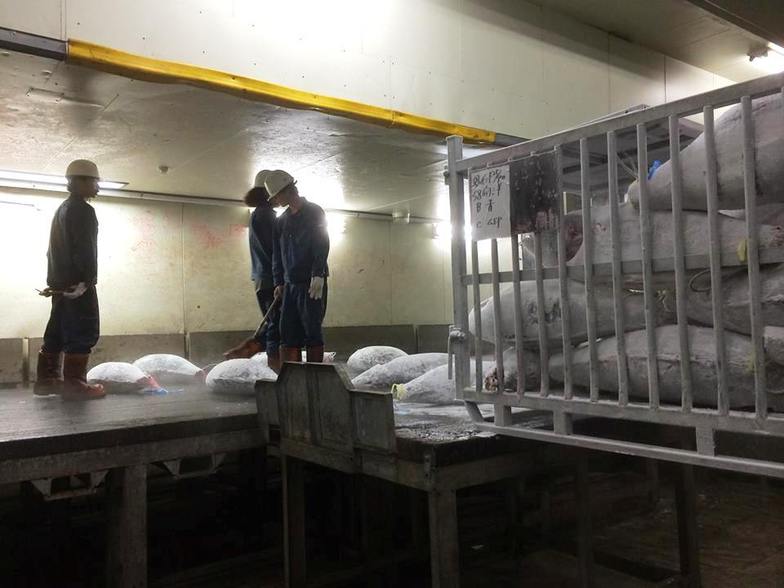It's definitely ginkgo season now. Smelling this scent makes me want to go to Shizuoka for some reason. The area around Okitsu in Shimizu Ward, Shizuoka City, used to be famous for growing mikan oranges on steep slopes, but around 1980, ginkgo cultivation spread as an alternative crop. I'd love to have some of that as a snack while sipping the local sake "Kokuka." I wonder if I'll make it in time for the returning bonito season too. It's getting colder, so Shizuoka oden sounds good too. Taking the express bus from Tokyo costs less than 3000 yen! That's the kind of association that spreads.
But back to the topic at hand. Shimizu Port is located directly opposite Shizuoka City's downtown area. Maruiri, a long-standing tuna wholesaler in Yaizu – a city boasting one of Japan's highest fishing yields – is where we find them. President Hiroyasu Teraoka approached us, saying, "Wholesale is important, but I really want to create products we can deliver directly to consumers." So, one day, we paid them a visit.

A -60°C Freezer
We handle frozen tuna. Our job is to bid on the catch as it comes in from the boats at the port and then distribute it. Frozen tuna starts to deteriorate if the temperature rises above -30°C, so we have to manage the temperature extremely carefully. That's why, even when we bid at the market, the tuna is still rock-hard frozen. Our guys can judge the quality of the flesh and how much to bid in the instant they hook their hand hooks. It's a true craftsmanship. It's far more difficult than the work of fresh tuna buyers who leisurely examine each fish body one by one.

Auction Scene
A single tuna is cut into four sections, known as "loins," in our processing room as needed. We slice it up with this electric saw, swish, swish, swish. Then we shave off the skin too. I heard from Mr. Yamada that "Alaska has salmon skin wallets," but making crafts out of tuna skin? That's probably impossible.
Maybe he's just dissing frozen tuna? True, thawing frozen tuna takes skill. But when you properly thaw quality tuna, it's delicious. Absolutely exquisite. We handle southern bluefin, bachi, yellowfin, swordfish, and bintoro here, but only bluefin and southern bluefin truly deserve the name "tuna."
Lately, even kids are saying stuff like "Oma bluefin is the best," but don't be ridiculous. Wild southern bluefin tuna has sweeter red meat and richer fat compared to bluefin tuna, making it the absolute best. Bluefin tuna meat has a slight sourness to it, right? Don't you think so? Southern bluefin tuna is called the red diamond because its color is so beautiful, but it also discolors easily, making it tricky to handle. Maybe that's why it's not as popular lately. It's so delicious it's almost unfair to compare it to farmed, fatty tuna.
In Yaizu, we have Yaizu Port, Yaizu New Port, and another one called Ogawa Port. Local fish like silver cod, Spanish mackerel, and red seabream are landed here. Yaizu has a long tradition of koji-marinated fish, so you can find marinated silver cod, Spanish mackerel, and red seabream for sale too.
Seriously, I'm so grateful for the bounty from Yaizu's ports and the sea. Mr. Yamada, you drink, right? There's an izakaya that serves amazing Southern Bluefin Tuna. I wonder if it's open yet... It's a bit early, but wanna go?
That's the kind of lively story I heard in Yaizu. Gathering every possible piece of information is the first step in product development. Did any of these stories give you a hint? It's quite a challenge, isn't it? Next week, let's talk about the product we actually developed with Maruiri-san.
Please, help yourself!
※I contributed about 8 pages to the current issue of the magazine 'Think! ' (Toyo Keizai Inc.) No.55, now on bookstore shelves. If you see it, please pick up a copy.





